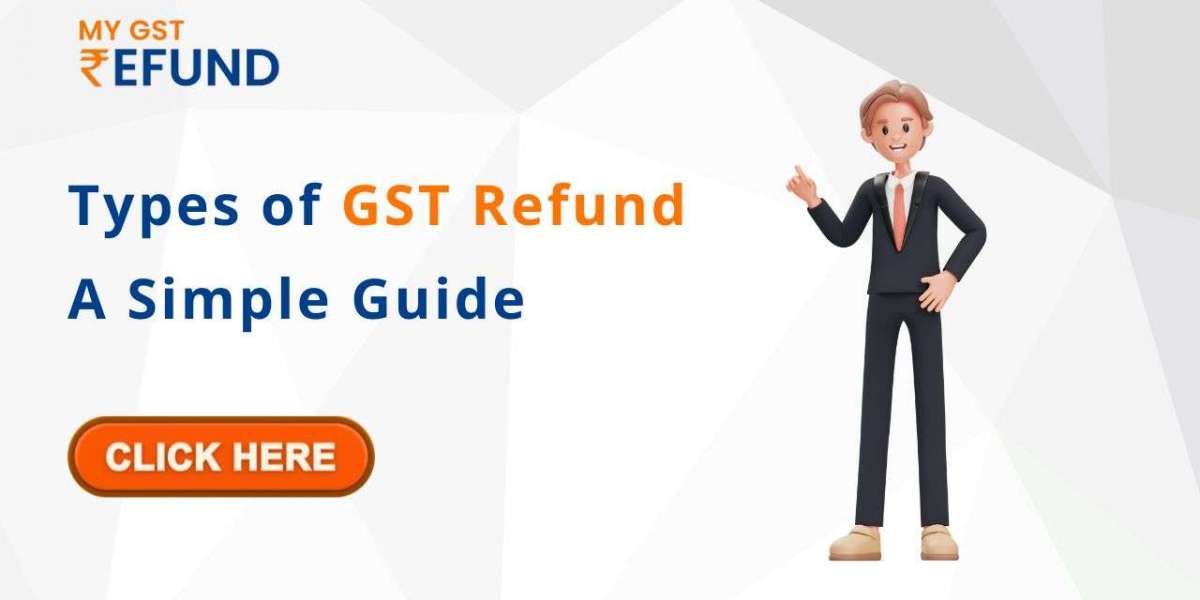GST refunds are an important feature of the tax system, allowing businesses to claim back taxes they’ve paid in excess. There are several scenarios where businesses can apply for a GST refund. Let’s explore the different types of GST refunds that businesses may be eligible for.
For Detailed Information Visit: How to claim GST Refund
1. Refund for Excess Payment of Taxes (Tax Paid in Excess)
This is one of the most common types of GST refund. If a business ends up paying more tax than required due to a mistake or error in filing returns, they can claim a refund for the excess payment. This can apply to CGST, SGST, IGST, or Cess.
2. Refund for Input Tax Credit (ITC) on Exported Goods and Services
Exports are treated as zero-rated supply under GST, meaning no tax is charged on the exported goods or services. However, businesses still pay taxes on goods and services used for export purposes. These businesses can claim a refund of the Input Tax Credit (ITC) they have paid on purchases related to exports.
3. Refund for Unutilized Input Tax Credit (ITC) in Case of Inverted Duty Structure
An inverted duty structure occurs when businesses pay higher tax on their inputs (purchases) than they collect on their outputs (sales). This often happens in industries with a higher tax rate on inputs compared to the output. Businesses in such situations can claim a refund of the unutilized ITC.
For More Info Visit: GST Refund for Exporters
4. Refund on Account of Finalization of Provisional Assessment
Some businesses may undergo a provisional assessment if there is uncertainty regarding their tax liability. Once the final assessment is made, if it turns out that the business paid more tax than required, they can claim a refund of the excess tax paid.
5. Refund for Excess Payment of Integrated Goods and Services Tax (IGST)
When businesses make interstate supplies, they must pay IGST. If a business has overpaid IGST, it can claim a refund for the excess amount paid. This typically happens when businesses make mistakes in their calculations or misfile their returns.
For More Info Visit: know about GST refund
6. Refund on Account of Zero-Rated Supplies (Other Than Exports)
In addition to exports, certain supplies, such as those made to Special Economic Zones (SEZs) or UN bodies, are also considered zero-rated under GST. Businesses involved in these transactions can claim a refund of the ITC they paid on inputs related to these supplies.
7. Refund on Account of Supply to SEZ Units or Developers
Supplies made to Special Economic Zones (SEZs) or their developers are also considered zero-rated under GST. Businesses supplying goods or services to SEZ units or developers can claim a refund on the ITC paid on inputs used for these supplies.
Tools to Help with Your GST Refunds
To make the GST refund process more efficient, there are two essential tools that can help businesses:
GSTIN Validator: Ensuring that your suppliers and customers have valid GSTINs is a key part of maintaining accurate records for GST claims. The GSTIN Validator tool allows you to verify the validity of GSTIN numbers, ensuring that your transactions meet the necessary criteria for claiming ITC and refunds. Using this tool helps reduce the risk of errors and delays in the refund process.
GST Refund Calculator: The GST Refund Calculator is a valuable tool that helps businesses estimate the refund they are likely to receive based on their Input Tax Credit (ITC) and taxes paid. It simplifies the calculation process, saving you time and reducing errors when filing for refunds. This tool is especially helpful for businesses dealing with excess tax payments or unutilized ITC.
Conclusion
Understanding the various types of GST refunds is essential for businesses to ensure they aren’t paying more tax than required. Whether it's a refund due to excess payment, unutilized ITC, or zero-rated supplies, businesses need to be aware of the refund options available to them. By using tools like the GST Refund Calculator and GSTIN Validator, businesses can streamline the refund process and optimize their cash flow, making GST compliance smoother and more efficient.







